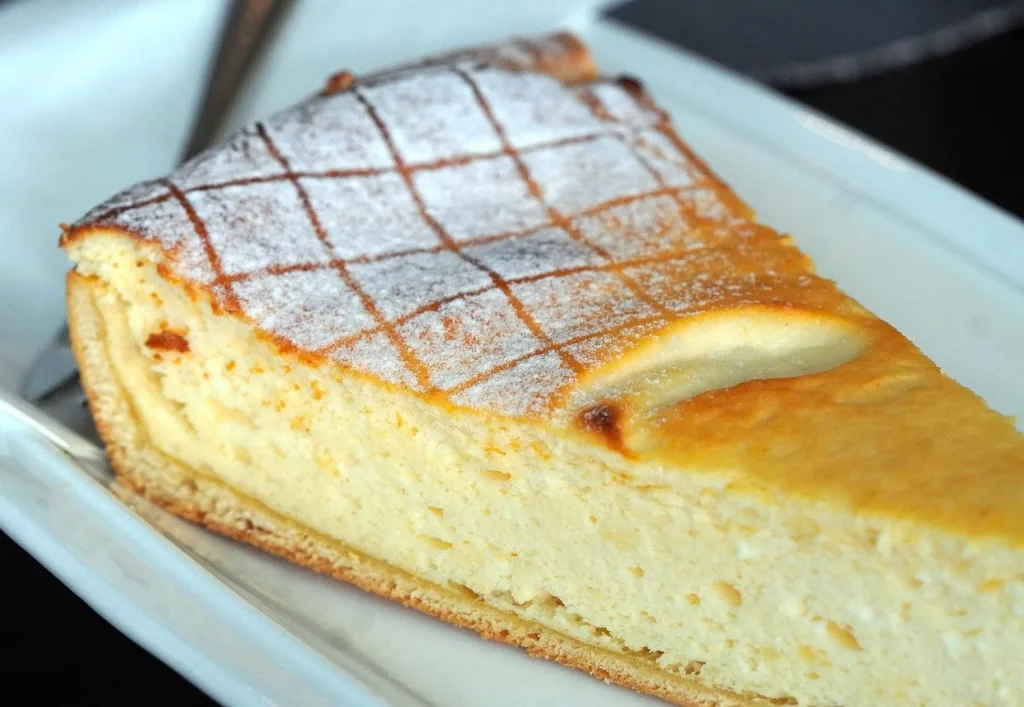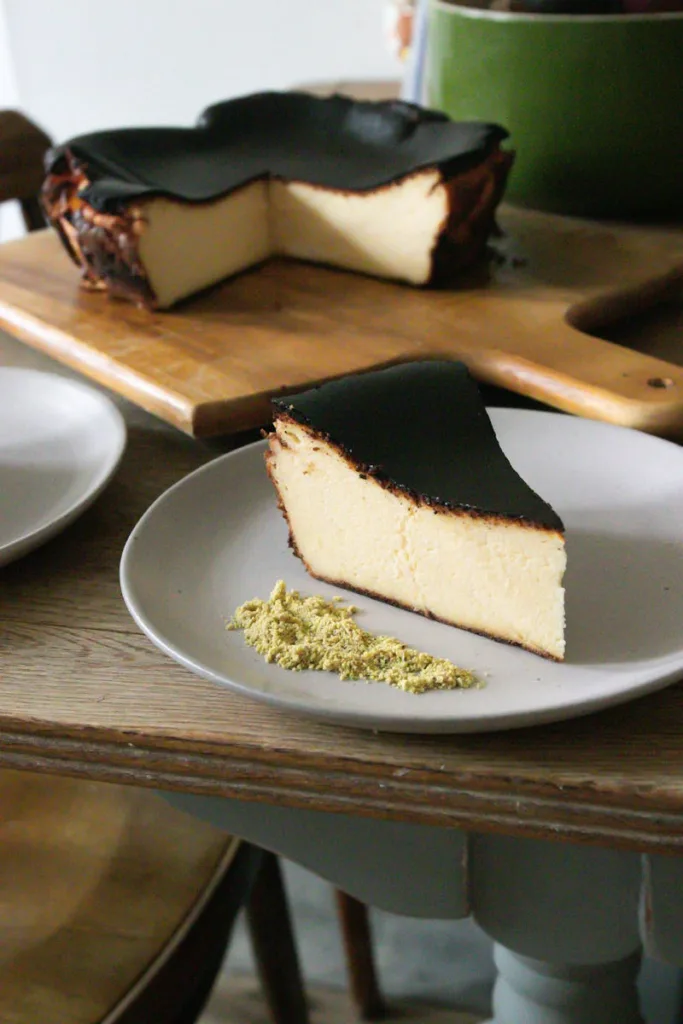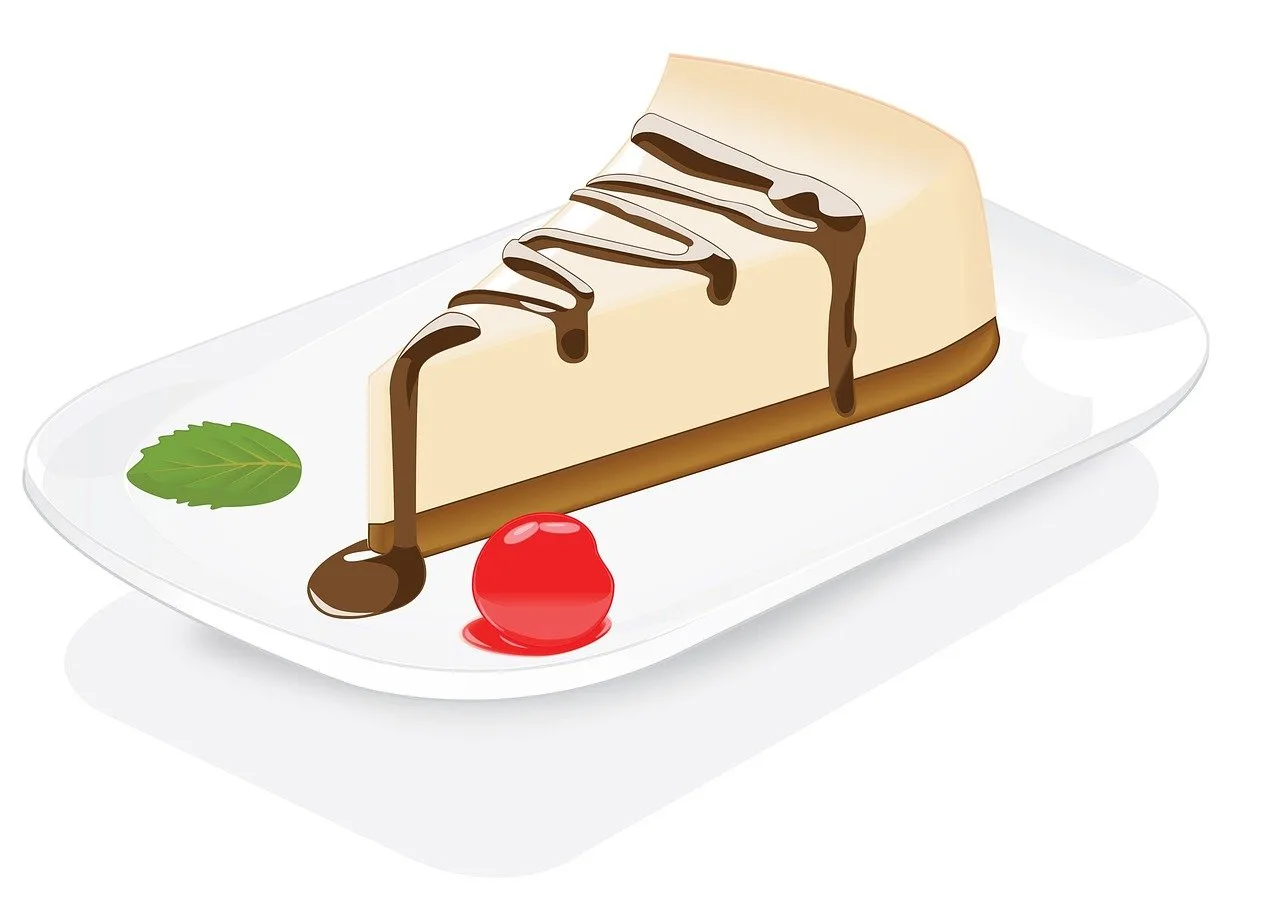Table of Contents
Top 8 Cheesecakes
Sernik (Polish Cheesecake)

Polish cheesecakes known as sernik have their roots in ancient Jewish and Christian customs. Eggs, sugar, and twaróg—a kind of curd cheese that has been used in desserts for hundreds of years—are the main ingredients. The recipe for sernik is thought to have been delivered by King Jan III Sobieski in the 17th century, following his victory over the Turks at the Battle of Vienna.
Sernik comes in a wide range of forms these days, some baked and some unbaked, but it’s typically baked over a layer of crumbly cake. Sernik frequently adds additional ingredients like raisins, chocolate sauce, or fruits. One of the most well-known versions of the dish consists of sponge cake on the bottom, with jelly and fruit on top.
Japanese cheesecake

This light and fluffy delicacy, known as soufflé cheesecake in Japan and cotton cheesecake or Japanese cheesecake outside of it, is produced by whisking egg whites into the cake ingredients (eggs, milk, sugar, and cream cheese), which is then cooked in a bain-marie.
When served cold, Japanese cheesecake is known for its fluffy, sponge-like texture. However, its best taste is when eaten warm, right out of the oven, when it practically melts in your tongue. German cheesecake known as käsekuchen was discovered in Germany in the 1960s by Japanese chef Tomatoro Kuzuno, who went on to create this dish.
New York-style cheesecake

The key characteristic that sets New York-style cheesecake apart from other cheesecakes is its dense, heavy texture, which is incredibly smooth and creamy. Rather than being chewy, starchy, or lemony, its flavor should be sweet and tangy. It’s thought that Junior’s created the first cheesecake in the New York style in the 1950s.
The base is typically a sponge cake or graham cracker crust, and the magic formula consists of heavy cream, eggs, vanilla, cream cheese, and (optionally) sour cream.
Basque Cheesecake

Known in its native Basque as simply tarta de queso or gazta tarta, this straightforward yet extremely creamy cheesecake version has been a decades-long local favorite at San Sebastián’s La Viña Bar. The Basque version of cheesecake is made without a crust, in contrast to its more widely known cousins, and is simply made with sugar, heavy cream, eggs, and cream cheese.
Rather, it is baked at a high temperature, which keeps the center mushy and the outside hard, darker, and slightly burnt. The world loves Basque cheesecake, and although it originated in La Viña, it is now available in many patisseries across the globe in many forms.
Käsekuchen

A thin layer of shortcrust pastry is covered with a creamy mixture of quark cheese, eggs, and (sometimes) other fruits to create a traditional German-style cheesecake. Although käsekuchen is sometimes likened to the traditional American cheesecake, the use of quark cheese, which has a slight acidity, produces a light and delicious delicacy that balances sweet and sour flavors wonderfully.
Käsekuchen is a traditional German dessert that is typically eaten as a daily treat with coffee or tea. It is typically served powdered sugar-dusted.
Topfentorte
Topfen, also known as quark cheese, is the primary component of topfentorte, an Austrian-style cheesecake. The cake ingredients are eggs, sugar, flour, whipped cream, lemon zest, and gelatin, in addition to topping. Usually, two layers of sponge cake are stacked on top of the tart topfen filling.
The cake is typically refrigerated after baking before being served. Before eating, topfentorte can be sprinkled with powdered sugar if necessary.
Fiadone Corsican Cheesecake
Fiadone, a typical delicacy composed with eggs, sugar, lemon zest, and lemon juice, is sometimes referred to as the Corsican version of cheesecake. Brocciu is fresh whey cheese made from goat or ewe’s milk. On occasion, oranges are substituted for lemons, and regional liqueurs can be added to the base for extra flavor.
Cake used to be a common dessert made around the holidays and a main course for many special events, but these days it’s consumed all year round. It can be eaten plain, with honey drizzled over it, or with fresh fruit or preserves on the side.
Ostkaka
Not to be confused with the popular American cheesecake, ostkaka is a very old Swedish specialty that literally translates to cheesecake. In the past, rennet has been used to turn milk into cheese, which is then mixed with flour, eggs, sugar, cream, and almonds before being baked until it takes on a light brown hue.
You may make the entire process easier by substituting cottage cheese. Ostkaka is considerably lighter, less sugary, less fatty, and slightly custardy than American cheesecakes. It is best served warm or room temperature, with whipped cream and strawberries on top or served with sour jam or fresh berry syrup drizzled over.
8 Best Cheesecakes in the World – TasteAtlas
read also : Eat Less of These 5 Prediabetes-Related Foods.
cheesecakes cheesecakes cheesecakes cheesecakes cheesecakes cheesecakes cheesecakes
You may make the entire process easier by substituting cottage cheese. Ostkaka is considerably lighter, less sugary, less fatty, and slightly custardy than American . It is best served warm or room temperature, with whipped cream and strawberries on top or served with sour jam or fresh berry syrup drizzled over.
You may make the entire process easier by substituting cottage cheese. Ostkaka is considerably lighter, less sugary, less fatty, and slightly custardy than American . It is best served warm or room temperature, with whipped cream and strawberries on top or served with sour jam or fresh berry syrup drizzled over.
You may make the entire process easier by substituting cottage cheese. Ostkaka is considerably lighter, less sugary, less fatty, and slightly custardy than American . It is best served warm or room temperature, with whipped cream and strawberries on top or served with sour jam or fresh berry syrup drizzled over.
You may make the entire process easier by substituting cottage cheese. Ostkaka is considerably lighter, less sugary, less fatty, and slightly custardy than American . It is best served warm or room temperature, with whipped cream and strawberries on top or served with sour jam or fresh berry syrup drizzled over.
Cheesecakes Cheesecakes Cheesecakes Cheesecakes


1 thought on “The World’s Top 8 Cheesecakes”